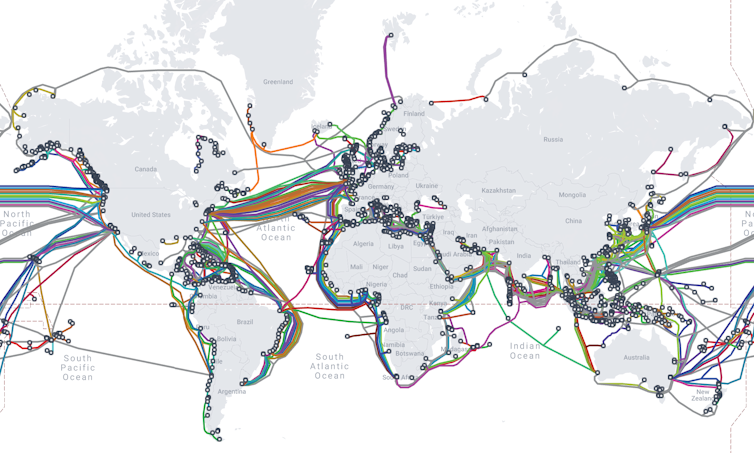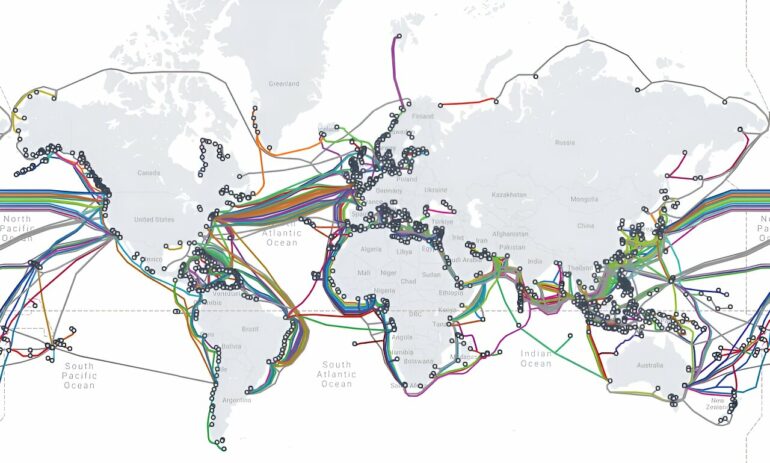Have you ever wondered how an email sent from New York arrives in Sydney in mere seconds, or how you can video chat with someone on the other side of the globe with barely a hint of delay? Behind these everyday miracles lies an unseen, sprawling web of undersea cables, quietly powering the instant global communications that people have come to rely on.
Undersea cables, also known as submarine communications cables, are fiber-optic cables laid on the ocean floor and used to transmit data between continents. These cables are the backbone of the global internet, carrying the bulk of international communications, including email, webpages and video calls. More than 95% of all the data that moves around the world goes through these undersea cables.
These cables are capable of transmitting multiple terabits of data per second, offering the fastest and most reliable method of data transfer available today. A terabit per second is fast enough to transmit about a dozen two-hour, 4K HD movies in an instant. Just one of these cables can handle millions of people watching videos or sending messages simultaneously without slowing down.
About 485 undersea cables totaling over 900,000 miles sit on the the ocean floor. These cables span the Atlantic and Pacific oceans, as well as strategic passages such as the Suez Canal and isolated areas within oceans.

Undersea cables tie the world together.
TeleGeography, CC BY-SA
Laying cable under the sea
Each undersea cable contains multiple optical fibers, thin strands of glass or plastic that use light signals to carry vast amounts of data over long distances with minimal loss. The fibers are bundled and encased in protective layers designed to withstand the harsh undersea environment, including pressure, wear and potential damage from fishing activities or ship anchors. The cables are typically as wide as a garden hose.
The process of laying undersea cables starts with thorough seabed surveys to chart a map in order to avoid natural hazards and minimize environmental impact. Following this step, cable-laying ships equipped with giant spools of fiber-optic cable navigate the predetermined route.
As the ship moves, the cable is unspooled and carefully laid on the ocean floor. The cable is sometimes buried in seabed sediments in shallow waters for protection against fishing activities, anchors and natural events. In deeper areas, the cables are laid directly on the seabed.
Along the route, repeaters are installed at intervals to amplify the optical signal and ensure data can travel long distances without degradation. This entire process can take months or even years, depending on the length and complexity of the cable route.
How undersea cables are installed.
Threats to undersea cables
Each year, an estimated 100 to 150 undersea cables are cut, primarily accidentally by fishing equipment or…



